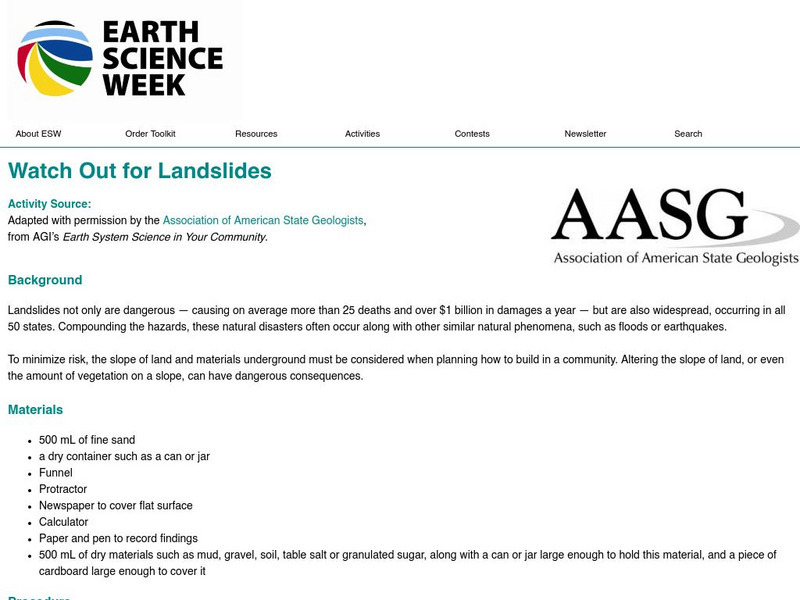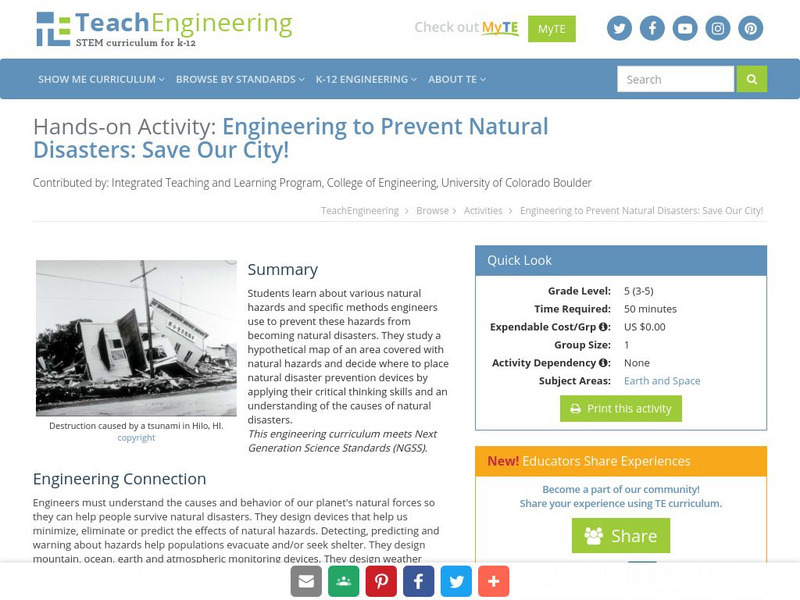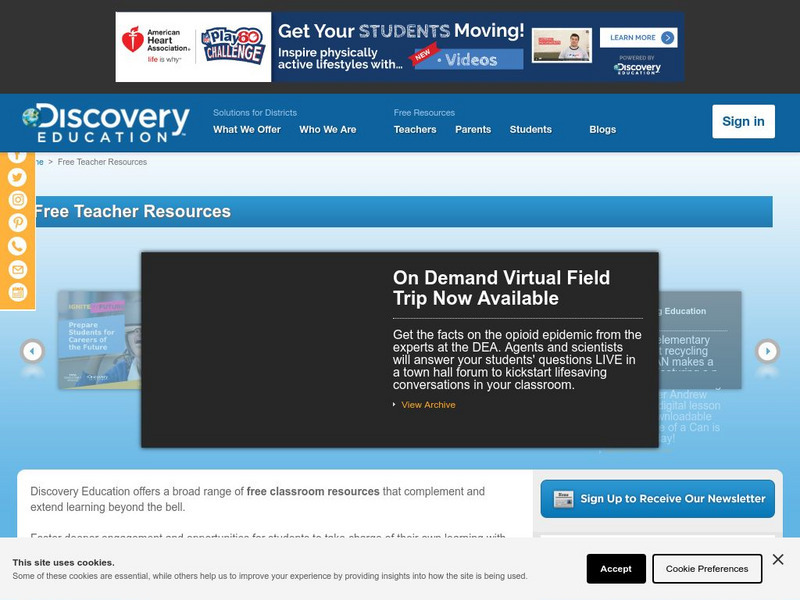Science Education Resource Center at Carleton College
Serc: Bot Ec: Energy Released in an Earthquake
A magnitude 8.5 earthquake (such as the 1964 Good Friday earthquake in Alaska) releases about 1x1018 joules of energy. The atomic bomb exploded over Hiroshima released about 1.5x1013 joules of energy. How many Hiroshima bombs would one...
Science Education Resource Center at Carleton College
Serc: Introduction to Texas Hurricanes
In this activity, students are asked to graph data about some 20th century hurricanes that hit the Texas coastline. For each graph, they are asked several questions about any apparent correlation between the different variables. Students...
Science Education Resource Center at Carleton College
Serc: Disaster Dynamics
The goal of the Disaster Dynamics project is to create games that teach players about the interaction between natural hazards and human decisions.
Other
K 3 Learning Pages: Tsunami Disaster
This site features several links to tsunami relief sites. Students and teachers can access information about the tsunami relief efforts through these resources.
Other
Personal Website: Richard Treves: Lesson Plans
Study climate change with Google Earth, explore glaciers in the Himalayas, and learn how to avoid lava destroying a home in Hawaii with these three expert-developed lesson plans.
US Geological Survey
U.s. Geological Survey: Landslide Types and Processes [Pdf]
The information in this publication provides an introductory primer on understanding basic scientific facts about landslides-the different types of landslides, how they are initiated, and some basic information about how they can begin...
US Geological Survey
U.s. Geological Survey: Floods and Flood Plains
This site provides a detailed report on floods and flood plains. Facts about weather patterns, zoning restrictions, and dams and levees are given along with diagrams and photos.
US Geological Survey
U.s. Geological Survey: Life of a Tsunami
Animations illustrating long-lasting tsunami waves once they strike a coast.
US Geological Survey
Usgs: Natural Hazards Programs: Lessons Learned for Reducing Risk [Pdf]
This site provides links to articles about natural disasters such as volcanoes, earthquakes, landslides, floods, etc.
Columbia University
Scientific Background on the Indian Ocean Earthquake and Tsunami
This site features information and related links that can be used by students and scientists to understand the events that led to the December 2004 Indian Ocean tsunami.
NASA
Nasa: Hurricanes
Learn about hurricanes and how they are created. Features include video animation, the histories of the most devastating hurricanes and topics such as hurricane naming and hurricane study.
American Geosciences Institute
American Geosciences Institute: Earth Science Week: Geologic Maps & Earthquakes
This activity is designed to give students practice using a geologic map to assess the likelihood and location of a particular natural hazard- earthquakes- in California.
American Geosciences Institute
American Geosciences Institute: Earth Science Week: Watch Out for Landslides
Students investigate how particle size and shape relate to the maximum slope angle the particles will maintain during a landslide.
TeachEngineering
Teach Engineering: Save Our City!
Students learn about various natural hazards and specific methods engineers use to prevent these hazards from becoming natural disasters. They study a hypothetical map of an area covered with natural hazards and decide where to place...
TeachEngineering
Teach Engineering: Naturally Disastrous
Young scholars are introduced to natural disasters, and learn the difference between natural hazards and natural disasters. They discover the many types of natural hazards - avalanche, earthquake, flood, forest fire, hurricane,...
NOAA
Noaa: Nssl: Weather Colouring Books
Print these free colouring books about tornadoes, thunderstorms and winter weather.
Community Learning Network
Community Learning Network: General Tsunami Resources
Come and learn more about tsunamis through this collection of resources. This site offers a wide variety of links to increase your knowledge of this powerful force of nature.
Other
Abc News: Talking to Kids About the Tsunami Tragedy
How can you begin to talk to your kids about the Tsunami tragedy? This site offers insight on how to deal with this difficult topic.
Better Lesson
Better Lesson: Building an Earthquake Resistant Structure
How can you use the engineering design process to build a structure that can stand up to an earthquake?
The Wonder of Science
The Wonder of Science: 4 Ess3 2: Natural Hazard Design Solution
Work samples, phenomena, assessment templates, and videos that directly address standard 4-ESS3-2: natural hazard design solution.
Discovery Education
Discovery Education: Understanding Tsunamis
Come and learn more about the devastating effects of tsunamis. This site features video segments revealing the devastation tsunamis can cause and how tsunamis are formed.
University Corporation for Atmospheric Research
Ucar: Flood Chances
Students test the hypothesis that a 100-year flood happens once every hundred years, learning how the probability of a flood does not mean that floods happen at regular intervals.
University Corporation for Atmospheric Research
Ucar: Drone Science Mission Board Game
Fly a drone to monitor a volcano in this board game that teaches engineering practices.
University Corporation for Atmospheric Research
Ucar: Weather in the News
In this activity, learners will compare stories about a weather event from different media sources and different perspectives.

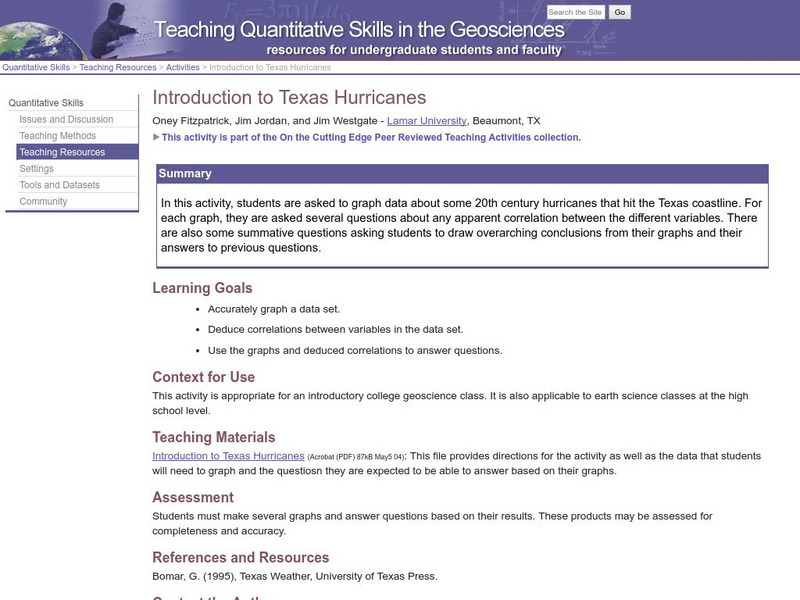


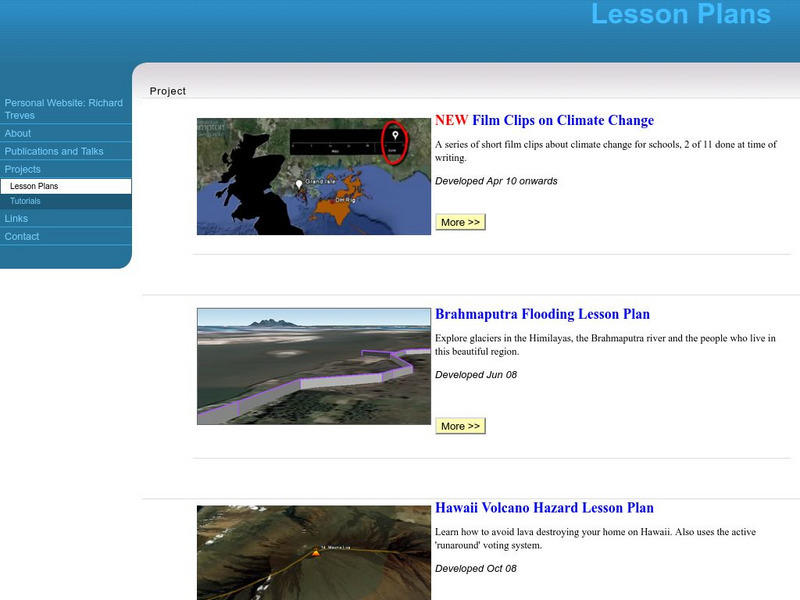
![U.s. Geological Survey: Landslide Types and Processes [Pdf] Handout U.s. Geological Survey: Landslide Types and Processes [Pdf] Handout](https://content.lessonplanet.com/knovation/original/103409-351e576f9cca56d4582135410961fcec.jpg?1661803269)




